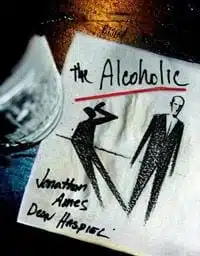
You’ll read The Alcoholic and you’ll think to yourself. You’ll think to yourself because The Alcoholic is the kind of book that provokes you. You’ll think, “strange” or “wonderful”, but invariably you’ll begin around orbit the conclusion, “a life of letters is not for the likes of you or I”. Then you’ll put away the book and you’ll think, “entertaining”, to keep yourself safe from it. Then years from now, for no reason at all, you’ll realize that The Alcoholic was a mystery story all along, and the author whose life it traces was really a detective-figure. And the detective was actually your ego. And the book itself was really performing psychoanalysis.
The Alcoholic organizes itself around the search for truth. It is the search for truth that unites the detective fictions written by Jonathan A., the story’s protagonist, with his own life story as he struggles to find meaning and a place of his own in the world. But perhaps more importantly it is the search for truth that unites the reader’s own search for meaning with the central drama of the piece — whether or not writer and essayist Jonathan Ames and artist Dean Haspiel have produced a work of graphic literature, or whether their profound talents have simply found a marriage of convenience.
On the surface of it, The Alcoholic struggles to find its genre, just as its protagonist struggles to find a life-path. Jonathan A. awakes in car with an amorous octogenarian, but how he arrived in that situation demands Ames produce a detective novel. Jonathan A. attempts a psychoanalytic reading of his life, suggesting his predicament as a direct result of his first beer. Ames shifts from detective story to bildungsroman. Later again, when Jonathan A. is plagued by trauma and broken relationships, Ames treads the same ground as Philip Roth or the more comedic David Lodge.
But what Ames shapes, with his fluency in literary staples, is the reader’s experience of literature as a detective story. Ames seems to guide us to the insight that all of literature is in response to a crime. Something is dead. Something is missing, or has been stolen. We as readers are following a trail of clues. Eventually we’ll get to the truth.
For Ames then, building a life and a career shares a thematic path with solving a crime. But what makes The Alcoholic a uniquely literate experience is Ames’ use of genre as clues. It is this tactic that allows the reader to be involved in the process of both psychoanalytic and sociological detective work.
Ames’ use of recognizable genre extends to his characters. Jonathan A.’s presence means we see Ames’ characters as we see others in real life. Not the fully-fleshed individuals they believe themselves to be, but psychic bits and pieces that are recognizable to ourselves. Ames’ “glimpses” extends to life situations. We glimpse at a teenager falling down drunk on the stairs. We glimpse a grown man trying heroin for the first time. We glimpse a teacher’s indiscretion with students. But we can never hold these images for more than a moment. Haspiel, plotting the artwork, manages a rare feat. He avoids posters, but tells the story in moments. Each panel unfolds an essay in dilemma.
Ames writes like a cartoonist while Haspiel draws like a novelist. The two modes complete each other. Between the two, The Alcoholic functions like what it is, an act of graphic literature, standing as a unique and worthy literary experience.
